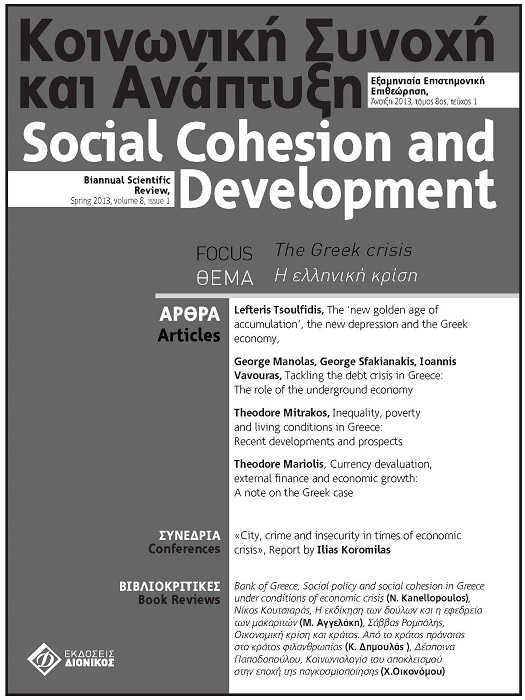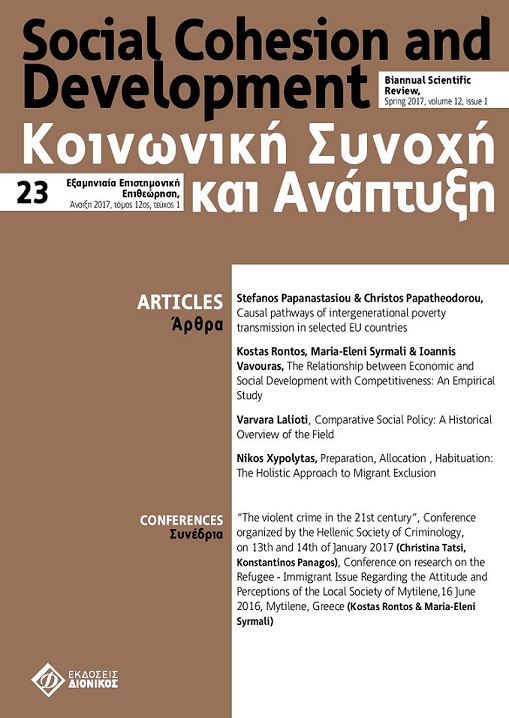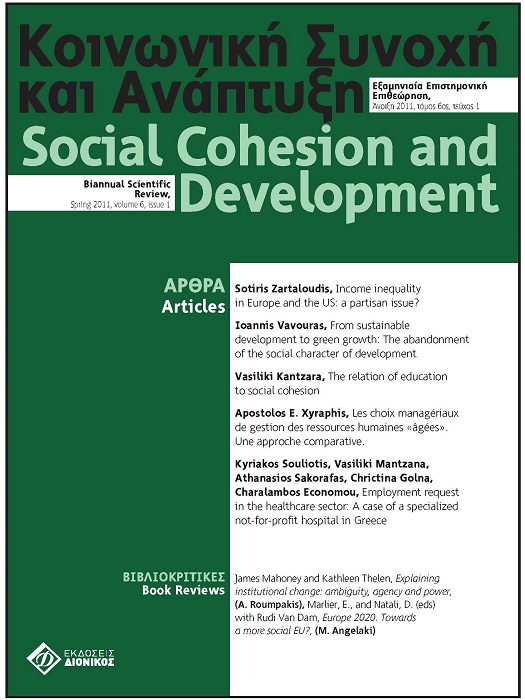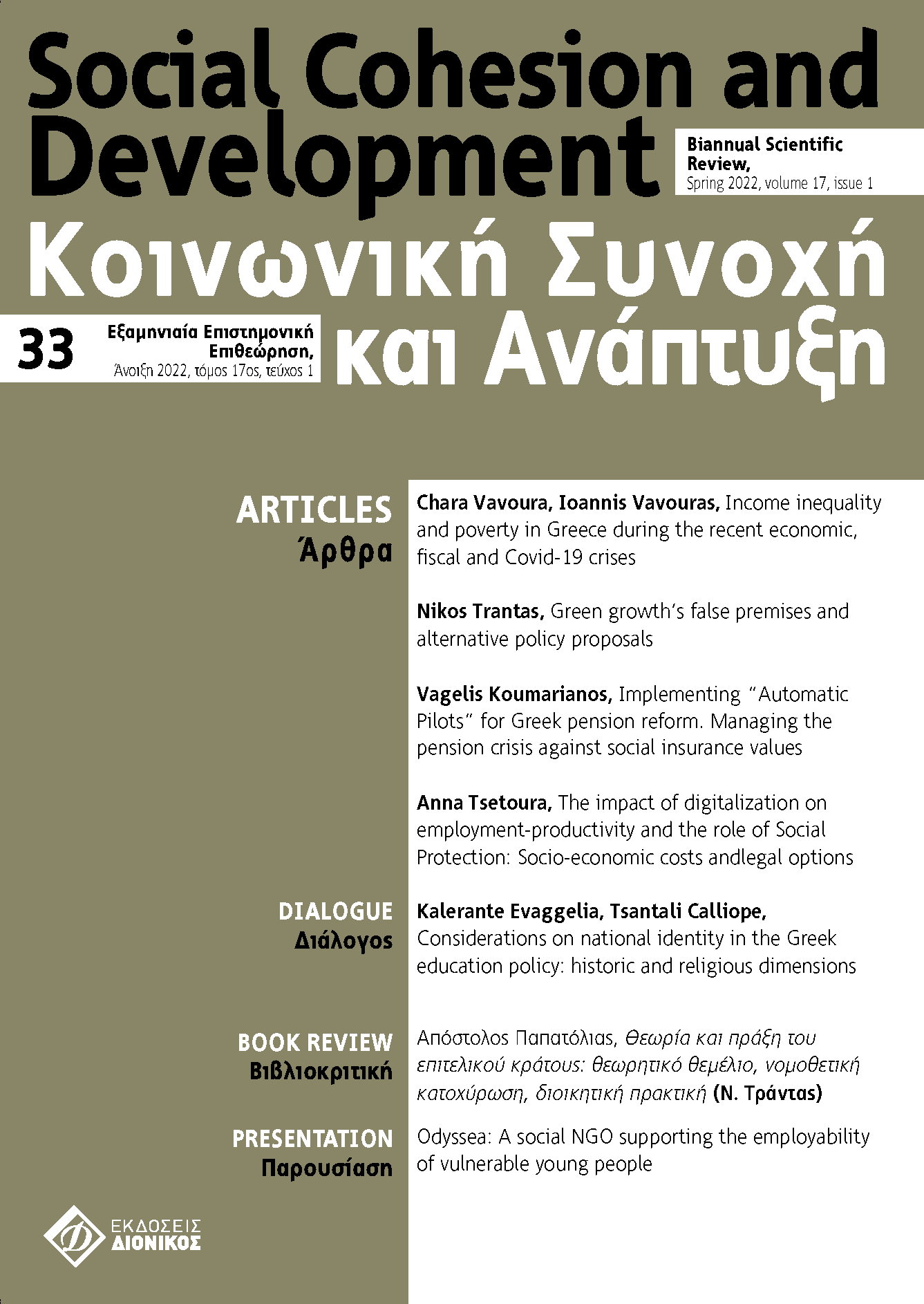Οι ασύμμετρες κοινωνικο-οικονομικές επιπτώσεις της παγκόσμιας επισιτιστικής κρίσης
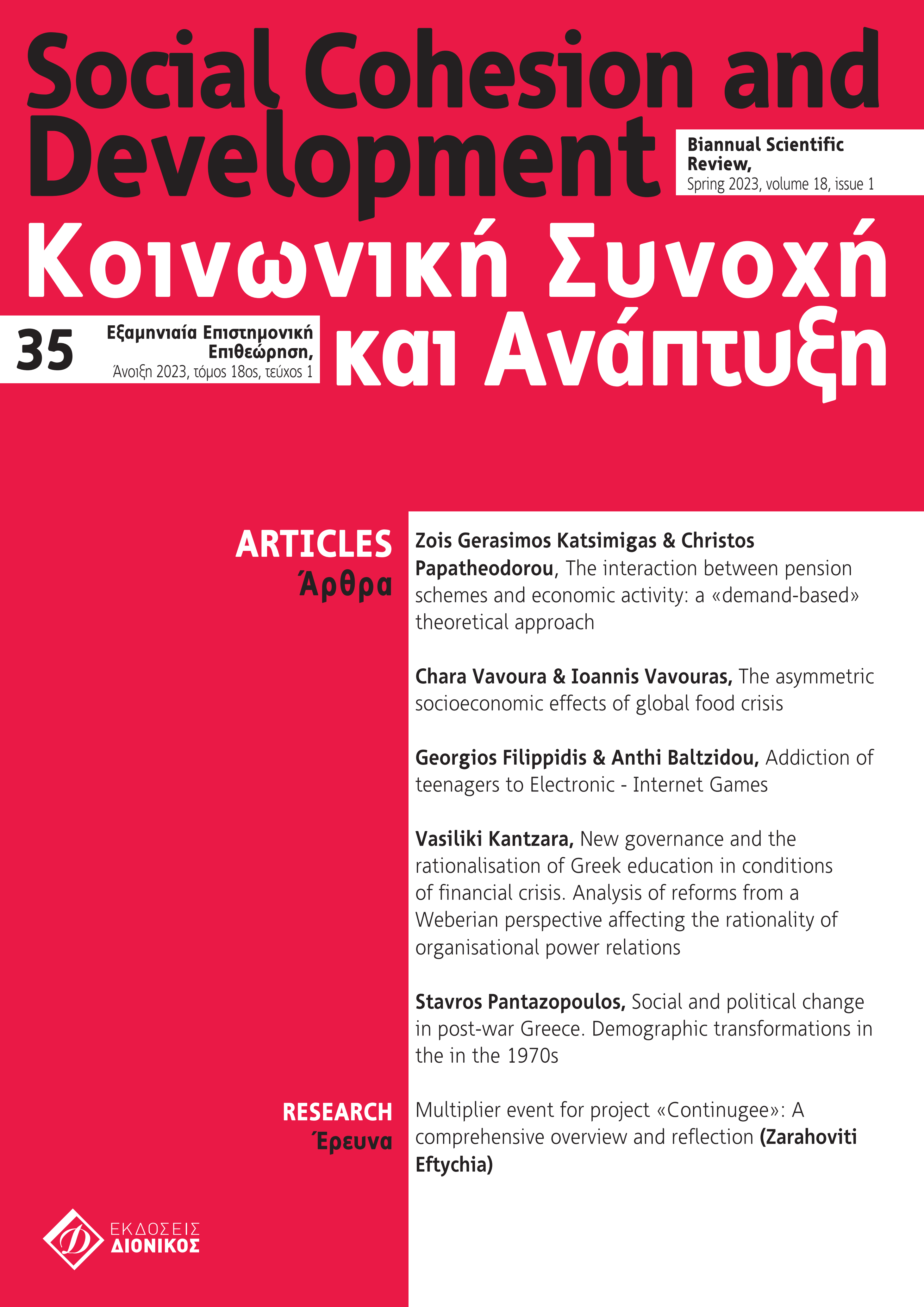
Περίληψη
Ο πλανήτης βιώνει μια επισιτιστική κρίση, πα-
ρόμοια με την οποία δεν είχε γνωρίσει κατά τον
21ο αιώνα. Η πανδημία του Covid-19 και η Ρωσι-
κή εισβολή στην Ουκρανία, σε συνδυασμό με τα
ακραία καιρικά φαινόμενα των τελευταίων ετών,
ήταν οι σημαντικότεροι προσδιοριστικοί παράγο-
ντες αυτής της κρίσης. Η επισιτιστική όμως κρίση
δεν επηρέασε ισόρροπα όλα τα νοικοκυριά και τα
κράτη. Επηρέασε περισσότερο τα πιο οικονομικά
ευάλωτα νοικοκυριά και τις χώρες χαμηλότερου
εισοδήματος, που μεγάλο μέρος της καταναλω-
τικής τους δαπάνης αφορά είδη διατροφής. Σκο-
πός της παρούσας εργασίας είναι η ανάδειξη των
ασύμμετρων και κατά συνέπεια αναδιανεμητικών
κοινωνικοοικονομικών επιπτώσεων της παγκό-
σμιας επισιτιστικής κρίσης.
Λεπτομέρειες άρθρου
- Πώς να δημιουργήσετε Αναφορές
-
Vavoura, C., & Vavouras , I. (2024). Οι ασύμμετρες κοινωνικο-οικονομικές επιπτώσεις της παγκόσμιας επισιτιστικής κρίσης. Κοινωνική Συνοχή και Ανάπτυξη, 18(1), 21–30. https://doi.org/10.12681/scad.37320 (Original work published 30 Ιούνιος 2023)
- Τεύχος
- Τόμ. 18 Αρ. 1 (2023): Νο 35
- Ενότητα
- Άρθρα

Αυτή η εργασία είναι αδειοδοτημένη υπό το CC Αναφορά Δημιουργού – Μη Εμπορική Χρήση – Παρόμοια Διανομή 4.0.
Οι συγγραφείς των άρθρων που δημοσιεύονται στην Κοινωνική Συνοχή και Ανάπτυξη διατηρούν τα δικαιώματα πνευματικής ιδιοκτησίας επί των άρθρων τους, δίνοντας στο περιοδικό το δικαίωμα της πρώτης δημοσίευσης. Άρθρα που δημοσιεύονται στην Κοινωνική Συνοχή διατίθενται με άδεια Creative Commons 4.0 και σύμφωνα με την άδεια μπορούν να χρησιμοποιούνται ελεύθερα, με αναφορά στο/στη συγγραφέα και στην πρώτη δημοσίευση για μη κερδοσκοπικούς σκοπούς και με δικαίωμα τροποποίησης μόνον με παρόμοια διανομή (αν αναμείξετε, τροποποιήσετε, ή δημιουργήσετε πάνω στο υλικό, πρέπει να διανείμετε τις δικές σας συνεισφορές υπό την ίδια άδεια όπως και το πρωτότυπο).


